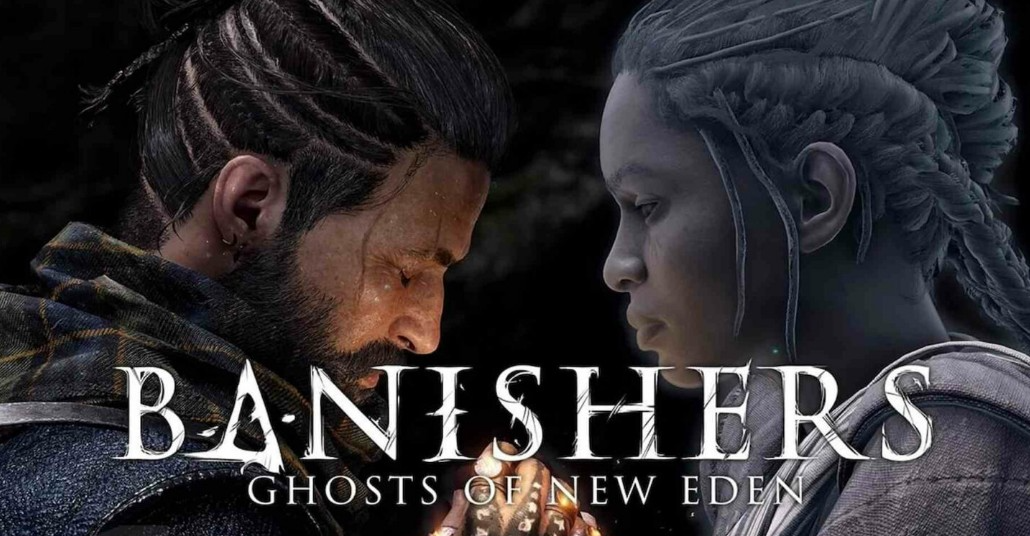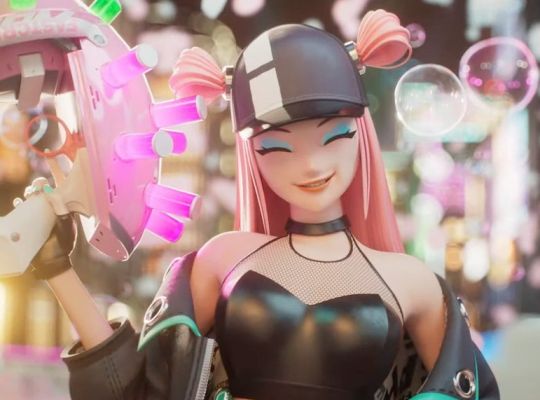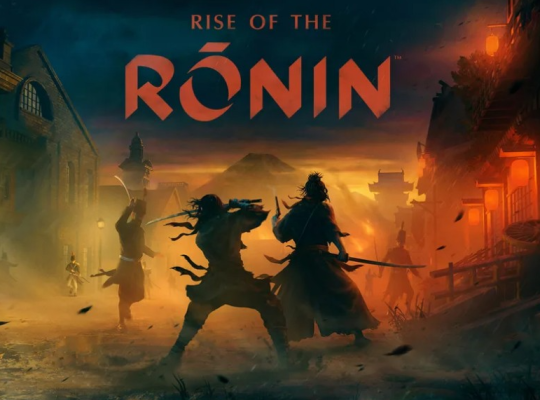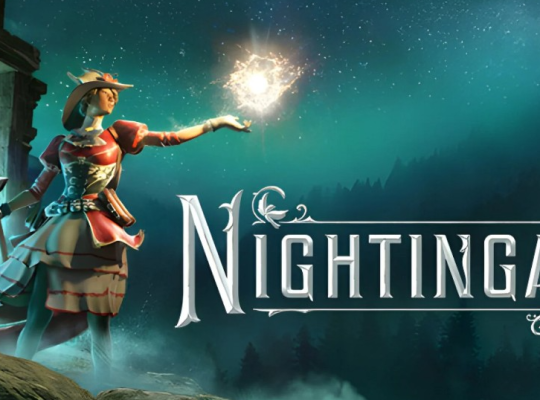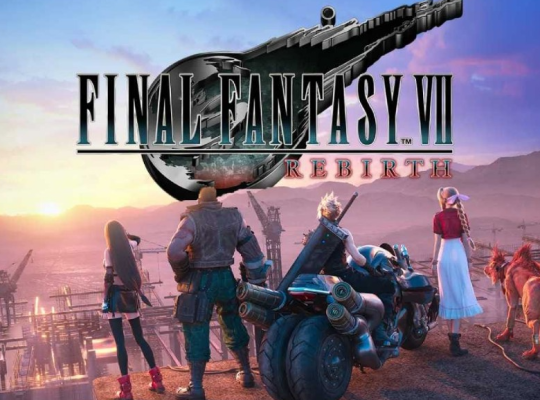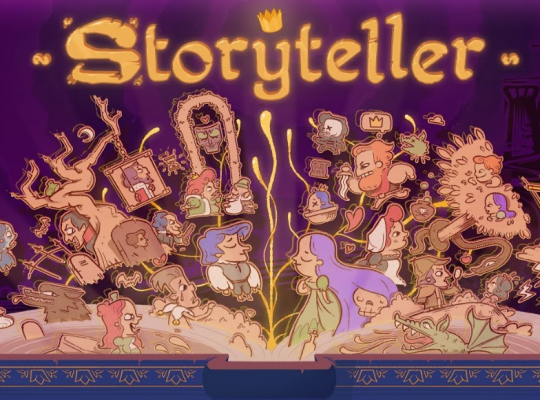Banishers: Ghosts of New Eden,” surpasses its predecessor, 2018’s Vampyr, in both ambition and execution. This gripping action adventure unfolds as a hauntingly beautiful tale, Banishers: Ghosts of New Eden revealing the evolution of the development team’s skills since the release of Vampyr.
The game commences with players assuming the role of Antea Duarte, lover and mentor to the fellow Banisher, Red Mac Raith. Tragedy strikes as Antea meets her demise, transforming into a ghost—the very existence she detests. Strengthened by their unbreakable connection, Antea’s ghost aligns with Red to fulfill their shared destiny. This partnership introduces a unique gameplay mechanic where Antea aids Red in exploration and combat, acquiring new skills and abilities that propel the duo to near invincibility.
Banishers adopt a Metroidvania approach, blocking off portions of the vast world until specific skills are obtained, enhancing the sense of progression. These skills not only facilitate exploration but also prove invaluable in combat, complementing Red’s melee attacks and rifle proficiency.
At the heart of the narrative lies the conflict inherent in the Banisher creed: “Life to living, death to the dead.” Antea’s ghostly predicament challenges the fundamental principles of a Banisher, as her lingering presence contradicts their purpose. The decision to either ascend Antea or allow her to persist alongside Red is complicated by the location of her lifeless body—a focal point of the curse, saturated with death and fear.
Beyond the action-adventure framework, Banishers unfolds as a poignant love story, skillfully woven into the gameplay experience. The journey to rectify the curse tests the relationship between Antea and Red in ways unforeseen, adding a layer of emotional depth to this captivating narrative. “Banishers: Ghosts of New Eden” stands not only as a thrilling gaming experience but also as a testament to the art of storytelling in the video game medium.
Banishers: Ghosts of New Eden – Crafting an Eerie Tale of Love and Loss
Few games manage to establish a captivating atmosphere as effectively as Banishers: Ghosts of New Eden does right from the opening moments. Stepping into New Eden Town with Red and Antea, a murder of crows flying overhead, and a pale moon casting its glow over a cathedral spire, the game immerses players in an eerie ambiance filled with suspense. The 17th-century Puritan settlement outside Boston, though lacking in vibrancy, becomes a compelling backdrop, with Banishers skillfully leveraging New Eden’s candle-lit melancholy to create a hauntingly cozy atmosphere.
As Red and Antea embark on their journey, the narrative unfolds, and the game truly hits its stride. Red Mac Raith grapples with the tragic loss of his wife, Antea, at the hands of a gruesome Nightmare terrorizing New Eden. The Nightmare’s Banishers: Ghosts of New Eden influence results in hauntings throughout the settlement, with specters of the recently deceased haunting the inhabitants. Banishers, however, weaves a tale that goes beyond the supernatural, exploring the themes of love in the face of tragedy.
The overarching theme in Banishers revolves around Red and Antea’s love story, and the game delves into the complexities of love in various forms. Throughout the gameplay, players encounter side missions known as “Hauntings,” each providing a unique perspective on the game’s central themes. For instance, a seemingly straightforward case, such as the local blacksmith’s disappearance, may lead to a narrative rabbit hole involving an aggrieved woman seeking an escape from a dire situation. Love becomes a multifaceted lens through which Banishers explores the intricacies of human emotions, from the brooding captain who sacrifices for his crew to the central characters facing the challenges of romance amidst death and letting go.
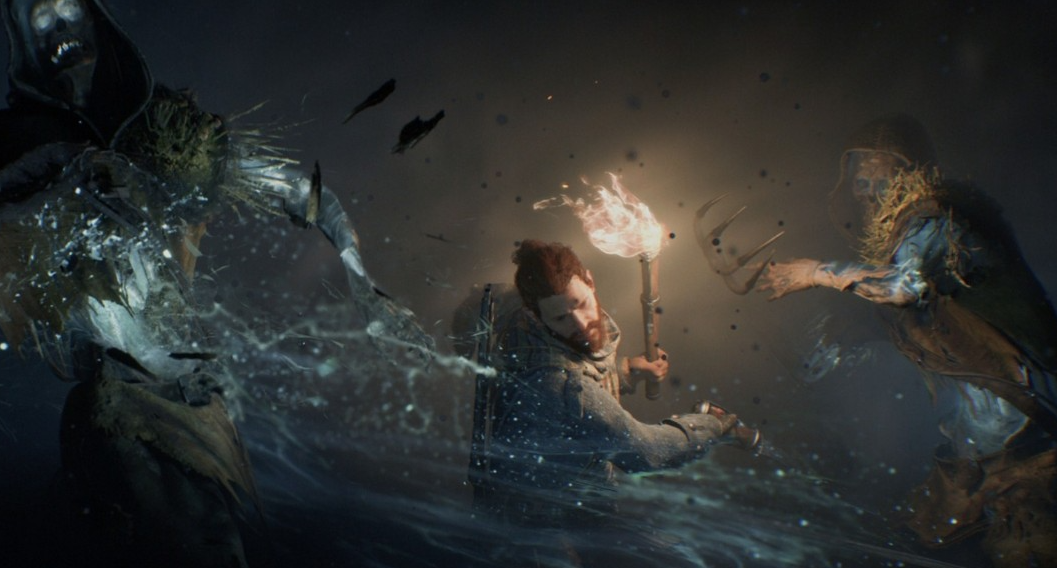
Crafting a genuine love story in a game can be challenging, often risking melodrama or unrealistic portrayals. Banishers, however, accomplishes this feat with finesse, grounding the narrative in the lived-in and nuanced relationship between Red and Antea. The couple’s interactions feel authentic, with the constant discovery of each other’s facets mirroring the dynamics of real relationships. Don’t Nod’s narrative prowess shines through in Banishers, demonstrating commendable dedication to a vision that seamlessly integrates every aspect of the game toward a cohesive end.
Yet, amidst the narrative triumphs, Banishers stumbles occasionally, particularly in its decision-based gameplay. The main story and side quests hinge on branching decision-making processes, where players, embodying the roles of judge, jury, and executioner as Banishers, must decide the culpability of the living or the dead in the fate of the recently departed. While the game promises significant impacts on the main story based on these decisions, the execution feels more disjointed than compelling, occasionally detracting from the overall experience.
Banishers: Ghosts of New Eden stands out as a masterfully crafted tale that blends supernatural elements with a profound exploration of love and loss. Despite occasional narrative hiccups, the game successfully draws players into its haunting world, where the choices made by Red and Antea resonate through a narrative that skillfully navigates the complexities of human emotions. The commendable narrative vision and atmospheric prowess make Banishers a compelling entry in the action-adventure genre.
A Love Story with Artistic Flourish and Narrative Oversimplification
Banishers: Ghosts of New Eden skillfully navigates the delicate terrain of love, presenting a narrative that feels grounded and authentic. The game’s portrayal of the relationship between Red and Antea is crafted with a deft hand, capturing the nuances of a lived-in romance amidst the supernatural challenges they face.
However, where Banishers struggles lies in its narrative approach, particularly in the resolution of its complex and thought-provoking storylines. Despite weaving intricate tales, the game ultimately reduces the final decision-making moments to a binary choice, explicitly categorizing them as either “good” or “bad.” This oversimplification, clearly stated at each juncture, diminishes the potential depth and nuance of the narratives, leaving players with reassurance rather than contemplation. The lack of complexity in the final decisions undermines the potential impact of stories that could rival those seen in prestige television.
Banishers, aspiring to the standards of prestige television, excel in presentation, punching above their weight class. Cutscenes are meticulously crafted, focusing on unique and dynamic cinematography, drawing inspiration from film and television. The game keeps the visual experience engaging, never settling for static camera angles outside of gameplay. Even standard NPC conversations showcase an artistic touch, positioning the camera to emphasize expressions of sorrow or anger, deviating from the conventional over-the-shoulder angles.
The presentation, however, grapples with a notable flaw—poor lip-syncing. Despite the spot-on voice acting from the entire cast, the discrepancy in lip movements detracts from the overall immersive experience. Nevertheless, Banishers: Ghosts of New Eden succeeds in offering players an artistic and Banishers: Ghosts of New Eden visually compelling journey, even as it wrestles with narrative simplifications that leave potential narrative richness untapped.
Crafting a Unique Combat Experience in a Focused Narrative Setting
Banishers: Ghosts of New Eden draws inspiration from the giants of the narrative third-person genre, and while it may not match their level of impact, it excels in crafting a compelling combat experience that propels players through its captivating narrative. Structurally, the game adopts a wide-linear approach to its levels, incorporating mini-bosses and puzzles between main story missions. Although this format is not groundbreaking, Banishers manages to keep players engaged, ensuring that every task undertaken contributes meaningfully to the overall progression.
The combat system, although rooted in familiar mechanics like heavy and light attacks, dodging, blocking, and parrying, introduces a refreshing twist by allowing players to switch seamlessly between Red and Antea. Red excels at dealing with possessed enemies, while Antea specializes in handling demonically possessed corpses. This dynamic creates a fun and strategic juggling act, as players must clear ghosts with Red and then switch to Antea for the finishing blows. Banishers strike a balance, preventing either character from dominating playtime for too long.
As the combat rhythm unfolds, both Red and Antea boast unique sets of skills intertwined through skill trees. As these trees grow, the game introduces new possibilities, encouraging players to synergize between the two characters. Some abilities unlocked by Red can enhance Antea’s effectiveness and vice versa. However, it takes time for the combat to fully open up, with the early stages characterized by somewhat mundane hit-and-dodge gameplay. Around the halfway point, the synergy between characters becomes more pronounced, offering a more engaging and dynamic combat experience.
Nevertheless, Banishers faces challenges in maintaining the interest of players in the long run, primarily due to a limited pool of enemies throughout most of the game. The encounters often involve fighting possessed corpses and standard ghosts with varying intensity levels. Beyond the initial hours, players encounter almost every type of enemy, and the game resorts to level-gating towards the end. Despite this drawback, Banishers shines in its main boss fights, presenting uniquely crafted encounters that deviate from the standard enemy pool. These boss battles, while not numerous, stand out as visual spectacles with refreshing combat sequences, injecting variety into the overall experience.
Banishers: Ghosts of New Eden excels in polish and simplicity, showcasing a focused approach that prioritizes its narrative core. While the game may not reinvent the third-person narrative action game genre, it doesn’t aspire to do so. Instead, it adeptly supports its compelling story, keeping players immersed in Red and Antea’s journey without unnecessary distractions. The game’s lean and straightforward design stands out in an era where many titles aim for grandiosity. Banishers are easy to pick up, captivating, and remarkably focused.
Despite its commendable qualities, Banishers: Ghosts of New Eden may not be universally recommendable. It caters to a niche audience, and the level of engagement may vary based on individual preferences for love stories and supernatural Puritan settings. The game’s appeal is likely to resonate most strongly with those who appreciate themes of demons, witches, and 17th-century gothic aesthetics.
In the realm of high-quality AA games, Banishers embodies a spirit that should not go unnoticed. While it doesn’t introduce groundbreaking systems, it meticulously focuses on a singular vision within its narrative, ensuring seamless harmony with other aspects of the game. Ultimately, love becomes the driving force of Banishers: Ghosts of New Eden, promising an enjoyable experience for those intrigued by the entwined story of Red and Antea. Don’t Nod delivers a finely tuned title that caters precisely to its target audience, presenting a polished gaming experience.
Banishers: Ghosts of New Eden – Unveiling Dark Mysteries with Nuanced Storylines
Beyond the central love story, Banishers: Ghosts of New Eden weaves a compelling tapestry of questlines that unfold haunting cases across its three main regions. As players delve into the narrative, they encounter a multitude of individuals tormented by spirits, compelling them to uncover the mysteries behind these supernatural encounters. Investigating each case involves tracking down evidence and items infused with spiritual energy, culminating in confrontations with ghosts that offer choices on how to proceed.
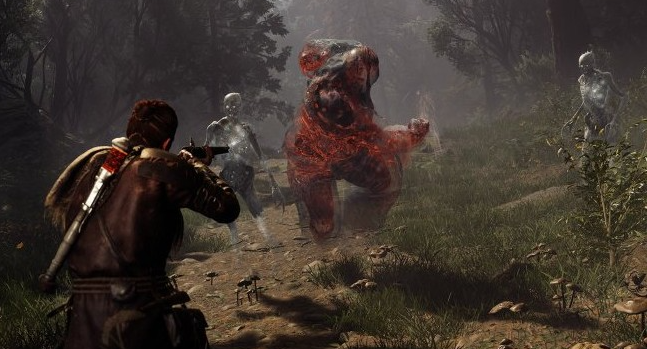
While some optional cases merely touch the surface of intriguing themes like cannibalism or domestic abuse, the core cases shine with weighty and intricate storytelling. Antagonists in these narratives avoid descending into mere villainy, revealing layers of complexity and often evoking a sense of pity once their transgressions are laid bare.
The immersive experience benefits from the Puritan pilgrims’ authentic British accents, enhancing the script’s delicate balance between period accuracy and contemporary accessibility. In moments of imagination and humor, the game shines, epitomized by Antea’s witty summation of a possession case: “Ruth and Alexander are having an affair, in her husband’s body.” Banishers: Ghosts of New Eden successfully marries dark mysteries with nuanced storytelling, offering players a captivating exploration of the supernatural in a richly detailed setting.
Haunting Ambitions Hindered by Familiar Repetition
In Banishers: Ghosts of New Eden, the promising plotlines and captivating setting lose momentum due to repetitive and uninspired activities that permeate this 20-hour-plus open-world adventure. The game, unfortunately, leans heavily on established design elements from titles like Assassin’s Creed, Horizon, Ghosts of Tsushima, and God of War, diluting its innovation potential.
The activities players engage in feel like a mere overlay on a base genre template, overshadowing the game’s fascinating setting once you step outside cutscenes and the thick atmosphere of “these dark times.” The routine of gathering herbs, reading correspondence in people’s homes, and engaging in mundane tasks feels all too familiar, detracting from the eerie ambiance the game aims to cultivate.
The combat, though functional, suffers from a sense of repetitiveness. Battling nearly identical mobs of specters and haunted corpses becomes routine, with encounters lacking the depth Banishers: Ghosts of New Eden needed to engage players intellectually. Even major boss fights fail to provide the required challenge, rendering most combat scenarios as mere exercises rather than strategic engagements.
Banishers: Ghosts of New Eden’s RPG elements contribute little to the overall experience. The selectable perks and equipment-based buffs primarily offer percentage trade-offs on damage and cooldowns, lacking the depth to facilitate distinct build types. The later stages of the game further underscore this weakness, as managing numerous minor buffs and debuffs becomes cumbersome without adding significant strategic value.
Exploration in the game’s expansive map often results in disappointment, as newly accessible locations frequently reveal mundane dead ends with minimal rewards. The pattern of breaking through obstacles to find common crafting ingredients becomes a monotonous exercise in arbitrary busywork, contributing little to the overall immersion.
While the later stages attempt to inject more complexity into the combat system, Banishers: Ghosts of New Eden struggles to overcome its fast-paced progression. The open-world experience pales in comparison to its renowned predecessors, lacking the challenging puzzles, intriguing landmarks, and riveting combat situations that defined those titles. Despite reaching its conclusion, Banishers leaves lingering doubt about its lasting impact, failing to carve a memorable place in players’ minds.
A Supernatural Journey Echoing God of War’s Legacy
Banishers: Ghosts of New Eden, a semi-open world 3rd person action game, draws clear inspiration from the acclaimed 2018 God of War reboot. The prologue unfolds through the perspective of Antea, offering crisp movement and somewhat spammy combat. However, the game truly shines when the narrative expands, allowing players to switch to Red and introduce Antea’s ghostly form. With her spectral powers, gained gradually through the main story, combat becomes more intricate and engaging.
Leveling up involves two systems: a traditional experience-based one for Red and a Haunting-tied side objective for Antea. Hauntings, which include main and side quests, revolve around tracking down specters and making choices that impact the game’s ending. The combat, reminiscent of God of War, features quick and responsive movements for Red, with a variety of combos and Antea’s abilities adding depth to the gameplay.
As the narrative unfolds, Red acquires a gun, utilized in both environmental puzzles and combat. The game successfully balances repetition in combat and puzzles without overstaying its welcome. Banishers: Ghosts of New Eden presents a competent and visually impressive experience, incorporating a light gear and upgrade system that allows for customization without introducing unnecessary grind.
A Visually Striking Journey with Heartfelt Performances
Banishers: Ghosts of New Eden stands out as a visually impressive game, set in a seldom-explored period in gaming history. The combat and exploration scenes showcase the game’s good looks, while real-time cutscenes occasionally reach the level of breathtaking beauty. The character models for Red and Antea are well-crafted, and the variety of outfits for Red adds to the aesthetic appeal. While some townsfolk may exhibit a lower visual quality, such instances are rare.
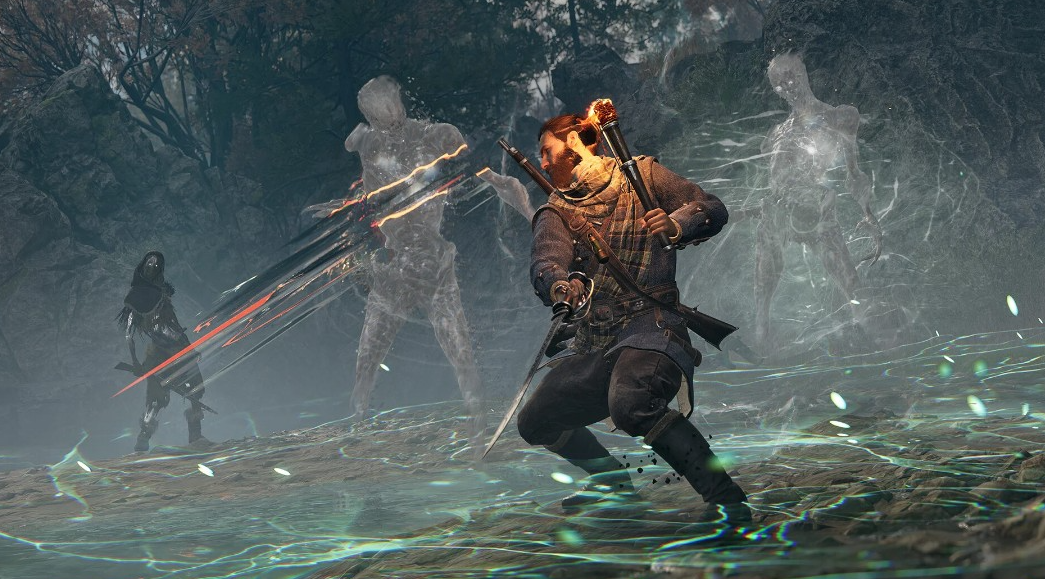
The game introduces familiar environmental obstacles, reminiscent of God of War, which can be frustrating. Traversable areas are highlighted with colorful markers, initially feeling out of place but eventually becoming appreciated for guiding players. The animations, particularly during cutscenes, excel in conveying emotions, enhancing the overall storytelling experience.
Banishers: Ghosts of New Eden’s standout feature lies in its exceptional writing and top-tier voice acting. The cast, including Russ Baine, Amaka Okafor, Ildiko Preszly, and others, Banishers: Ghosts of New Eden brings a depth of emotion to the characters. The combination of nuanced writing and soulful performances is evident in the delivery of each line, evoking genuine emotional responses from players. The game’s dialogue, accompanied by these heartfelt performances, creates a captivating and emotionally resonant experience.
Banishers: Ghosts of New Eden – A Mesmerizing Blend of Love and Supernatural Mystery
Banishers: Ghosts of New Eden stands out as a captivating action game, enriched by a solid concept and an exceptional paranormal investigation system. The narrative delves into the poignant theme of grappling with the loss of loved ones in death, offering a compelling story that, despite occasional pacing issues, remains worth experiencing. The combat system introduces innovative elements that, while marred by limited enemy variety and control issues, contribute to an overall engaging experience.
The instantaneous swap between the corporeal and ghostly planes adds a unique dimension to solving mysteries and engaging in battles, showcasing the game’s creativity. Despite its flaws, the writing and well-crafted characters play a pivotal role in carrying Banishers through its rough patches, making bidding farewell to them a poignant and challenging experience.
In its entirety, Banishers: Ghosts of New Eden emerges as a marvelous creation, a beautifully crafted love story that showcases the development team’s growth and elevated skills. The central cast leaves a remarkable impression, with characters whose lives feel authentically lived, shaped by meaningful pasts. The meticulously crafted world allows the characters’ personalities to shine, contributing to the narrative’s brilliance. The game effectively explores fear as a potent weapon, wielded in ways that lead to profound destruction.
With the haunting cases offering distinct playthroughs, Banishers provides excellent value for players, showcasing the team’s dedication to delivering a comprehensive gaming experience. This masterpiece surpasses even Don’t Nod’s acclaimed work on Life is Strange, establishing Banishers: Ghosts of New Eden as a true work of art—a spiritual journey and a testament to the power of love in the face of the supernatural.







